1. ROCK CYCLE
The cycle of rocks within the interior
of the earth or on the surface of earth is known as rock cycle. There
are three different types of rocks that constantly change, from form
to another through a number of different processes, also over time.
Such as the igneous rock, which is form from cooling or
solidification. Sedimentary rocks are formed by the processes of
compaction, and cementation, finally the metamorphic rocks are the
result of increased temperature and pressure. Together explain the
rock cycle, which is formed from one process to another.
Igneous rocks are formed when magma
cools and hardness, igneous rocks could be formed inside the earth or
above the ground. When a volcano erupts, the magma turns into lava
that eventually cools very quickly and form a igneous rock , but no
crystals would form on it.
Metamorphic rocks are formed under the surface of earth. The changes occur due to the intense heat and pressure that means, that metamorphic rocks basically are form by squeezing.
If the metamorphic rocks are melted, then solidify they become on igneous rocks,and as a result the cycle start all over again.
2. ROCKS
Metamorphic Rock Metamorphic rocks are formed under the surface of the earth from the
metamorphosis (change) that occurs due to intense heat and pressure
Metamorphic rocks are formed under the surface of the earth from the
metamorphosis (change) that occurs due to intense heat and pressure
Magma
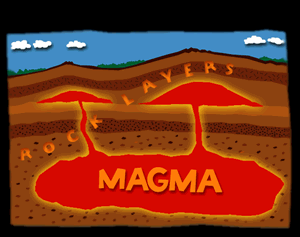
Hot fluid or semifluid material below or within the earth's crust from which lava and other igneous rock is formed by cooling.
 Lava
Lava Lava is molten rock expelled by a volcano during eruption. Although lava is quite viscous, with about 100,000 times the
viscosity of water, it can flow great distances before cooling and solidifying, because of both its thixotropic and shear
thinning properties.

Solidification:
Solidification is a phase transition in which a liquid turns into a solid when its temperature is lowered below its freezing point.
Igneous Rock.
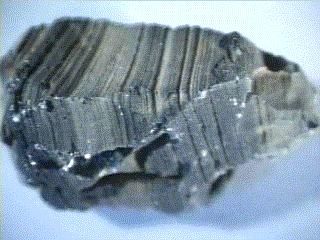 Igneous rocks are one of the three major rock types and are basically rocks that solidified from magma
Igneous rocks are one of the three major rock types and are basically rocks that solidified from magma
Weathering
Erosion
Erosin is the process by which the surface of the earth is worn away by the action of water, glaciers, winds, waves, etc.Sediment
 Sediment is a naturally occurring material that is broken down by processes of weathering and erosion, and is subsequently transported by the action of wind, water, or ice, etc.
Sediment is a naturally occurring material that is broken down by processes of weathering and erosion, and is subsequently transported by the action of wind, water, or ice, etc.
Compaction

The process by which the porosity of a given form of sediment is decreased as a result of its mineral grains being squeezed together by the weight of overlying sediment.
Cementation
Sedimentary rock
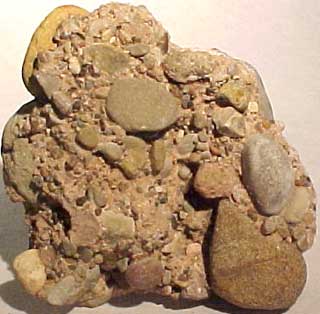 Sedimentary rocks are formed from particles of sand, shells, pebbles, and other fragments of material. Together, all these particles are called sediment. Gradually, the sediment accumulates in layers and over a long period of time hardens into rock. Generally, sedimentary rock is fairly soft and may break apart or crumble easily. You can often see sand, pebbles, or stones in the rock, and it is usually the only type that contains fossils....
Sedimentary rocks are formed from particles of sand, shells, pebbles, and other fragments of material. Together, all these particles are called sediment. Gradually, the sediment accumulates in layers and over a long period of time hardens into rock. Generally, sedimentary rock is fairly soft and may break apart or crumble easily. You can often see sand, pebbles, or stones in the rock, and it is usually the only type that contains fossils....3.ROCK TYPES
- THE IGNEOUS ROCK
Igneous rocks are called fire rocks and are formed either underground or above ground. Underground, they are formed when the melted rock, called magma, deep within the earth becomes trapped in small pockets. As these pockets of magma cool slowly underground, the magma becomes igneous rocks.
intrusive rocks: rocks formed underground are called intrusive rocks. Intrusive rocks are characterized by large crystal sizes, their visual appearance shows individual crystals interlocked together to form the rock mass. The cooling of magma deep in the Earth is typically much slower than the cooling process at the surface, so larger crystals can grow.
extrusive rocks: crystallization of magma at the surface of the Earth are called extrusive rocks. They are characterized by fine-grained textures because their rapid cooling at or near the surface did not provide enough time for large crystals to grow.
Extrusive rock - Obsidian Intrusive rock - diorite.
Obsidian is an igneous rock Diorite is acoarse- grained, intrusive igneous
that forms when molten rock rock that contains a mixture of felspar,
material cools so rapidly pyroxene, hornblende and sometimes quartz.
that atoms are unable to arrange
themselves into a crystalline structure.
The result is a volcanic glass with
a smooth uniform texture that
breaks with a conchoidal fracture.
- The sedimentary rock.
Weathering processes break down rock into finer and finer material and
such material is often transported and deposited as sediment. The
processes of compaction and cementation of this sediment over a long
period of time turn the sediment into rock. The formation of rock in
this way is termed "lithification".
There are three types of Sedimentary Rock:
|
Conglomerate rock. (clastic)
Conglomerate forms where a sediment of rounded clasts at least two millimeters in diameter accumulates. It takes a strong water current to transport and shape particles this large. So the environment of deposition might be along a swiftly flowing stream or a beach with strong waves. There must also be a source of large-size sediment particles somewhere up current. The rounded shape of the clasts reveal that they were tumbled by running water or moving waves.
(chemical sedimentary rock)
The next type above of sedimentary rocks do have a crystalline texture. Like the igneous rocks, these also crystallize out of a solution. These rocks however, form from a water solution, and not from molten rock. Various salts (rock salt and gypsum) and some dolomites and limestones (by volume the most important chemical sediment) form this way. These rocks are called chemical sedimentary rocks. Unlike clastic rocks, the rocks get their names primarily on their composition. Chemical sedimentation involves water and therefore the depositional environments will be most often found near or under water.
(Bioclastic rock)
The final type of sedimentary rock results from the accumulation and lithification of plant and animal remains such as shells. These biogenic sediments for the most part, do not constitute a distinct class of sediments, except that they involved life in their formation. Because these rocks are formed from fragments (clastic), and the fragments are the result of a biological process, these rocks are known as bioclastic. Coal and shell limestone are good examples of bioclastic rocks.- Metamorphic rocks.
rocks arise from the transformation of existing rock types, in a process called metamorphism, which means "change in form". The original rock is subjected to heat and pressure, causing profound physical and/or chemical change. The protolith may be sedimentary rock, igneous rock or another older metamorphic rock.
Metamorphic rocks have been modified by heat, pressure and chemical process usually while buried deep below Earth's surface. Exposure to these extreme conditions has altered the mineralogy, texture and chemical composition of the rocks. There are two basic types of metamorphic rocks: 1) foliated metamorphic rocks such as gneiss, phyllite, schist and slate which have a layered or banded appearance that is produced by exposure to heat and directed pressure; and, 2) non-foliated metamorphic rocks such as marble and quartzite which do not have a layered or banded appearance.
Gneiss(foliated rock)
Foliation is any penetrative planar fabric present in rocks. Foliation is common to rocks affected by regional metamorphic compression typical of orogenic belts. Rocks exhibiting foliation include the standard sequence formed by the prograde metamorphism of mudrocks: slate, phyllite, schist and gneiss. The slatey cleavage typical of slate is due to the preferred orientation of microscopic phyllosilicate crystals. In gneiss the foliation is more typically represented by compositional banding due to segregation of mineral phases.
Marble(non - foliated rock)
Marble is a non-foliated metamorphic rock that is produced from the metamorphism of limestone. It is composed primarily of calcium carbonate.
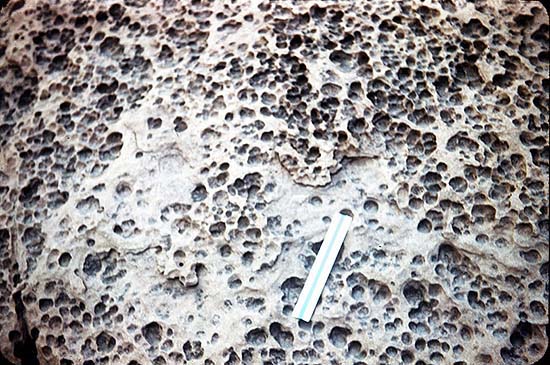
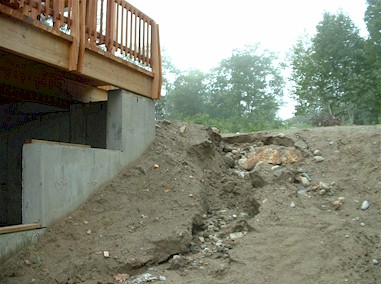




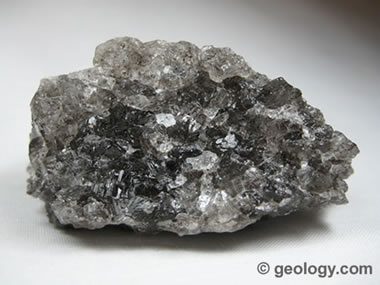


No comments:
Post a Comment